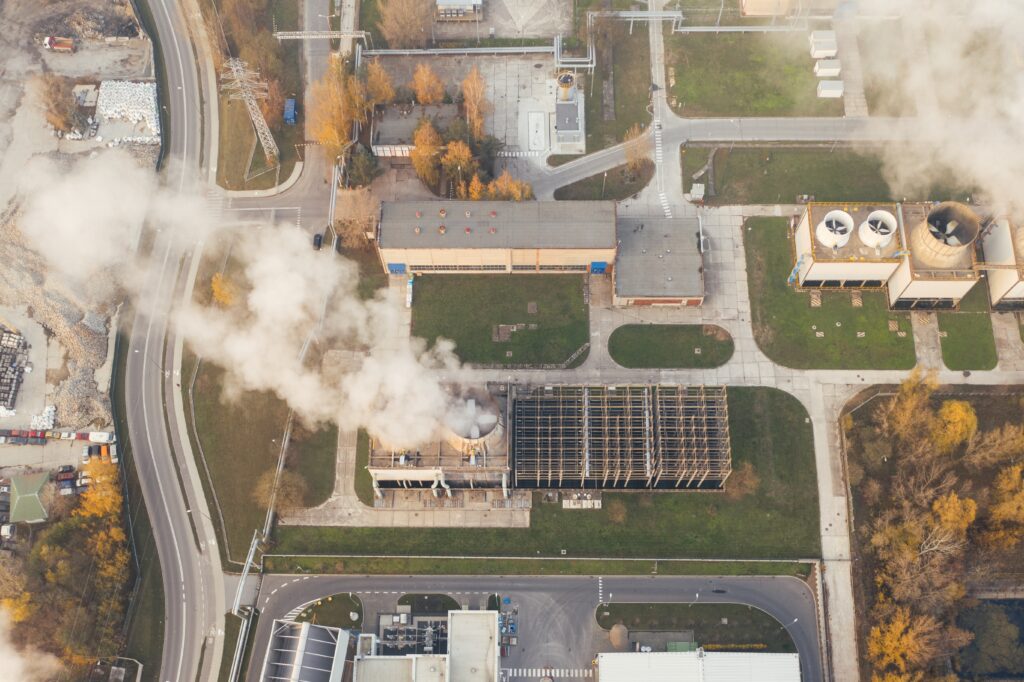It is impossible to enjoy and succeed in a workplace if you are short of long-term sustainable energy. You’ll likely find it hard to stay focused, make the right decisions, participate in teamwork, or put in productive hours if you lack consistent energy. A significant majority of high achievers rely on coffee, guarana, or energy drinks for an instant energy boost to support their performance. In fact, by drinking these drinks, they are riding an energy roller coaster of momentary highs and lows throughout the day and early evening. Maybe you are in the same boat and want to learn how to build lasting energy to perform your best at work?

The key to enjoying consistent energy comes from feeding and supporting your mitochondria. If it has been a while since you read about mitochondria or biology, do not worry. We’re here to begin it by digging into the definition of mitochondria and their importance in our body as energy powerhouses.
What are mitochondria?

Mitochondria are organelles. If we talk about one unit or an organelle, it is called a mitochondrion. To define an organelle, it is anything that does a specific function within a cell in your body. There are around 200 to 2000 mitochondria found in each of our cells, depending on what kind of cell it is. You find more in your brain, your muscles, and your liver. These energy-packed powerhouses evolved from bacteria, and they have their own DNA and RNA.
One of the functions of mitochondria is to generate energy. Additionally, they support the natural repair mechanisms of our body. They’re also a part of our immune response, and they play a major role in apoptosis. (Apoptosis is all about retiring cells that are past their prime.)
If you’re concerned about supporting your mitochondrial health, consider your eating activity as a training plan rather than a diet. At the same time, make sure that you’re reducing inflammation in your body. Building your mitochondrial health or long-term sustainable energy can be achieved by using a variety of strategies. At first, you must understand the factors that damage your mitochondrial health.
One of the byproducts of generating energy is the production of reactive oxygen species or ROS. They’re also known as free radicals and are responsible for potential oxidative damage in your mitochondria. Mitochondria have their processes to mop them up and excrete them. But if you have a lot of ROS going on, then these guys can become overwhelmed.
What is ROS?
ROS is a type of free radical, and radicals are active. Radicals are atoms that have an unpaired electron. The unpaired electron makes them desperate to find another electron to pair up with and so they steal them from other atoms. They’re desperate for that friend. And losing an electron can change the cell structure or function and this is where the damage occurs. It changes instructions coded to our DNA, it can increase the likelihood of low-density lipoproteins getting trapped in artery walls. It can change a cell’s membrane, which affects what can enter or leave that cell. And antioxidants are our natural defense against radical damage because they donate electrons.

Some drugs also damage your mitochondria such as certain antibiotics that specifically target bacterial DNA. Since your mitochondria also evolved from bacteria and have corresponding DNA, they are prone to damage when the drugs are taken. The drugs that create side effects of producing ROS or reactive oxygen species, decrease your antioxidants
and can also decrease the nutrients that your mitochondria need to function well. Alcohol is another factor that damages mitochondria.
ROS has a key role in damaging mitochondria. But these notorious guys also play a key role in contributing good deeds like cell signaling and defense and in DNA replication. Too much ROS, however, can damage your cell structures.
Ways to boost your mitochondrial health
If you want to boost your mitochondrial health, you don’t need to change the whole lifestyle, you just need to do a little bit of a bunch of stuff, and it’ll all add up. Get started with improving your mitochondrial health, and the environment enabling your mitochondria to create more mitochondria, then the more energy you will have. The entire process of boosting your energy level in a consistent and lasting way is about retiring defective mitochondria and replacing them with new healthy ones in your cells. You can achieve it by following three main tips below:
- Make sure your diet is rich in antioxidants
Your diet for enhancing your energy level should provide the organelles with the building blocks to work optimally. This includes a wide variety of nutrient-dense food and not too many calories. Enjoy a diet that’s rich in antioxidants which are our natural defense against radical damage to cells. The diet comes primarily from your plant-based foods. The best foods for creating a long-term sustainable reservoir of energy include walnuts, pecans, chestnuts, and dark chocolate with over 70% cocoa content. Include berries in your diet, particularly gooseberries, dog rosehip, bilberries, moringa, and blueberries. Similarly, spicing up your food with clove, peppermint allspice, cinnamon, oregano, thyme, sage, rosemary, and saffron may help prevent oxidative damages ROS can cause to the health of your mitochondria. And all of these foods are rich in polyphenols.

Make a little change to your diet plan. Have half a cup of berries for breakfast in the morning, maybe with some nuts, or on your muesli or in a smoothie regularly. Get a square of dark chocolate at night. All these little things increase the antioxidants in your nutrition enabling you to overcome oxidative damage to your mitochondria, thus
enhancing your energy in a natural and sustainable way. The other thing you can do to make sure you’re getting a diet rich in antioxidants is to eat a wide variety of colorful plants. Oxygen radical absorbance capacity or ORAC used to be the way that they measured antioxidant-rich plants but it was withdrawn in 2012. But if you see something concerning ORAC, you want one that’s got a high number associated with it.
- Reduce your exposure to POPs

The environmental toxins contain heavy metals often called persistent organic pollutants or POPs. You get exposed to these through food or air. And the most common ones are organochlorine pesticides, like DDT, some industrial chemicals like polychlorinated biphenyls or PCB, and also byproducts from
some industrial processes, dioxins, such as polychlorinated dibenzo-p-dioxins or PCDD, and polychlorinated dibenzofurans or PCDF. And we found through the Stockholm Convention on Persistent Organic Pollutants that the POPs have such a huge impact on our health that they’ve been regulated. Unfortunately, as we get older, your body’s natural response of removing cells past their prime and replacing them with new cells; the process is known as autophagy, starts to decline. And there can also be genetic variations that may affect your mitochondria.
- Stay hydrated

Keeping the cells bathed in their natural fluid is another way of helping your mitochondria function optimally. So make sure you’re staying hydrated. When it comes to enriching the mitochondria, also ensure that you stay hydrated with water or herbal teas. They keep your cells, including your energy reservoirs hydrated.
- BONUS TIP: Increase your mitochondria

The good news is that the immersion of your body in cold water causes a shock within the body and the body’s natural response to that is to increase your mitochondria. Going for a walk in the winter can also make you chilled enough to have more mitochondria. It’s not only by optimizing your mitochondrial health but also by increasing the number of mitochondria that you can maintain consistent energy throughout your day. To increase mitochondria, you can make use of cold such as in contrast therapy; using hot water and then cold water.
Conclusion:
These are the three ways you can boost your energy by supporting your mitochondria. So make sure your diet is rich in antioxidants, reduce your exposure to those POPs, and make sure that you’re getting enough hydration to keep those cells naturally bathed. This will create an environment that’s conducive to your mitochondria to thrive and flourish abundantly.

